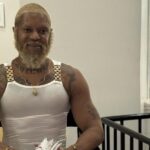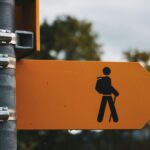New York City is facing a surge in demand for special education services, and the system is under pressure. With more students being diagnosed with learning differences, developmental delays, and behavioral challenges, the city’s public schools are scrambling to meet the moment. The urgency isn’t just about numbers, it’s about equity, access, and the future of inclusive education in one of the most diverse school systems in the country.
Why the Demand Is Rising
The rise in demand for special education services in NYC is driven by a mix of factors, some expected, others more recent. First, there’s increased awareness. Parents and educators are spotting signs of neurodivergence earlier, thanks to better screening tools and a cultural shift toward destigmatizing learning differences.
Second, the pandemic disrupted developmental milestones. Remote learning created gaps in socialization, routine, and academic progress, especially for students who rely on structure and individualized support. Many children who slipped through the cracks during lockdowns are now surfacing with needs that require formal intervention.
Third, digital habits are reshaping how young brains function. As NY Weekly recently explored in its piece on the hidden cognitive cost of social media, attention spans, emotional regulation, and executive function are all being impacted. These shifts are contributing to a rise in behavioral and learning concerns that demand specialized support.
Staffing Shortages Are Undermining Progress
Even as demand grows, NYC schools are facing a chronic shortage of qualified special education professionals. The number of certified special education teachers, therapists, and paraprofessionals hasn’t kept pace with student needs. In some districts, caseloads are double what’s recommended, leaving educators stretched thin and students underserved.
This staffing crisis affects everything from classroom ratios to the timely delivery of Individualized Education Programs (IEPs). Delays in evaluations, missed service hours, and inconsistent support are becoming common, even in schools with strong reputations.
Retention is another issue. Special education roles are emotionally demanding and often underpaid. Without adequate support, burnout is high. NYC’s Department of Education has launched recruitment initiatives, but experts say more needs to be done to make these careers sustainable. That includes better pay, mentorship programs, and mental health resources for educators themselves.
Families Are Navigating a Complex System
For parents, accessing special education services in NYC can feel like navigating a bureaucratic maze. The process involves evaluations, documentation, meetings, and advocacy, often with little guidance. Language barriers, limited digital access, and systemic delays make it even harder for families in marginalized communities.
Some parents turn to private evaluations or legal support to secure services, but that’s not an option for everyone. The result is a two-tiered system where wealthier families can fast-track support, while others wait in limbo.
The city’s recent smartphone ban in schools has added another layer to the conversation. While the policy aims to reduce distractions, some educators worry it could limit access to assistive technologies used by students with disabilities. Balancing discipline with accommodation is becoming a key challenge.
Parents also report inconsistent communication from schools. Some receive regular updates and collaborative support, while others struggle to get basic information. This inconsistency erodes trust and makes it harder to advocate effectively.
Schools Are Innovating, But It’s Not Enough
Despite the challenges, many NYC schools are finding creative ways to expand special education services. Some are partnering with nonprofits to offer speech therapy, occupational support, and counseling. Others are using technology to deliver personalized learning plans and track progress.

Charter schools and magnet programs are experimenting with inclusive models that integrate special education students into general classrooms with co-teaching support. These approaches show promise, but scaling them across the city’s vast school system is a major hurdle.
There’s also a push to train general education teachers in special education strategies. With better tools and understanding, they can support students more effectively and reduce reliance on pull-out services. But professional development requires funding, time, and buy-in from leadership.
Some schools are piloting sensory-friendly classrooms, peer mentoring programs, and trauma-informed teaching practices. These innovations reflect a growing understanding that special education isn’t just about academics, it’s about creating environments where all students can thrive.
Policy and Funding Need to Catch Up
At the policy level, NYC’s special education services are governed by federal mandates like IDEA (Individuals with Disabilities Education Act), but implementation varies widely. Advocates say the city needs clearer accountability metrics, faster evaluation timelines, and more transparent data reporting.
Funding is another sticking point. While NYC allocates billions to education, special education often competes with other priorities. Advocates are calling for dedicated budgets that reflect the true cost of services, including staffing, training, and infrastructure.
The city’s annual special education reports show incremental progress, but the pace isn’t matching the urgency. Without bold investment and reform, the system risks falling further behind.
There’s also a need for better data. Tracking outcomes, service delivery, and student progress across boroughs would help identify gaps and allocate resources more effectively. Transparency isn’t just good policy, it’s essential for trust.
What’s Next for NYC’s Special Education Landscape
The growing need for special education services in NYC is a wake-up call, not just for educators, but for policymakers, tech developers, and community leaders. It’s a chance to rethink how we support diverse learners in a city that prides itself on inclusion.
That means listening to families, empowering teachers, and designing systems that are flexible, equitable, and responsive. It also means recognizing that special education isn’t a niche, it’s a core part of the city’s educational future.
As NYC continues to evolve, so must its approach to learning differences. The students are here. The need is clear. Now it’s time for the system to rise to the challenge.
















